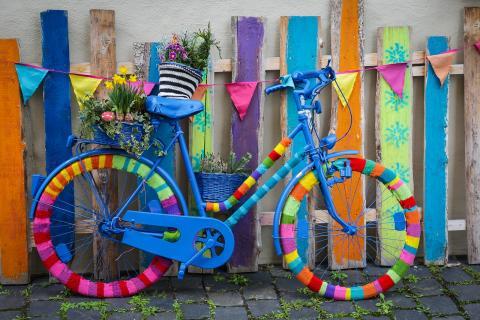
From a young age, most women (myself included) are instructed on how to use tampons and pads and find a hormonal birth control that works for us. Some of us continue to do fine on conventional products, but it’s important to know that there are other options that don’t contain pesticides, reduce waste, and help manage PMS symptoms and irregular periods without adding synthetic hormones. For those who have wondered if there are options beyond what you find at a drug store, here’s your relief.
Birth Control
Birth control is a tough subject, and most people have strong opinions on the best option. We’re lucky to live in a time where options include the birth control pill, patch, IUDs, diaphragms, and more. 25.9% of sexually active women use the birth control pill, as a 2016 study by the Guttmacher Institute reports, while only 1.4% use fertility awareness-based methods, which typically involve tracking your basal temperature every morning and checking your cervical fluid, but involve no synthetic hormones. Why the drastic difference, especially when fertility awareness method (known as FAM) involves zero side effects and has a 99.4% effectiveness rating with correct use? Unfortunately, FAM is often lumped together with the Rhythm Method, a form of birth control with a high user error rating, simply because it’s based on the belief that all women ovulate on day 14 of a 28-day cycle—which isn’t that simple for most women. FAM, on the other hand, is based on the belief that women ovulate at different times, and often at different times each month, and have cycles that last anywhere from 25 to 40 days in length (and can fall outside those ranges, too.) If you’re tempted to try FAM, I highly recommend reading Toni Weschler’s Taking Charge of Your Fertility and taking an in-person or online FAM course. When done correctly, FAM has a nearly no-fail rate—but the key is when done correctly. Make sure you know how to chart and have been doing so for 3-4 months before solely relying on FAM as your only form of birth control.
An additional advantage to FAM is the fact that it can be used to both prevent and assist pregnancy. For women wanting to avoid pregnancy, the fertile periods appear far more frequently to prevent women from becoming pregnant; for women looking to get pregnant, days are tracked such that fertile times are few and far between. If a woman who has been avoiding pregnancy wants to have a child, there is no transition involving hormones that can disrupt her cycle.
Period Underwear
Pads aren’t fun, especially if you experience heavy flows. There’s often the fear of leakage, not to mention the waste that goes along with having to change your pad several times a day during your heaviest flow days. However, the invention of period pads has curtailed both discomfort and environmental waste. Now, many companies offer a wide array of underwear options that include everything from bikini to thong to boy shorts and work for the lightest flow days to the heaviest. Reusable cloth pads are always an option, but period underwear makes for one less step when getting dressed. To clean, simply rinse underwear and throw it in a washing machine separate from other clothing. Dry as normal and you’re done.
Menstrual Cups
Think of menstrual cups like environmentally responsible tampons that often have the advantage of feeling more comfortable. These silicone-based products are shaped like bells with a stem that can be cut to fit your body best. Simply insert when you are menstruating and empty, then flush, when full. Most companies make options available for women who have had children and those who have not. There are several great brands on the market. Find one that works for you.
Organic Pads & Tampons
Menstrual cup and period underwear don’t work for all women at all times of their period—and that’s okay. Everyone’s body is different and it can take time to get used to new products. It’s taken me several cycles to transition away from tampons and pads, and even then I like to occasionally use pads as back-up on my heaviest days. Luckily several brands now make organic options to avoid conventional cotton products that are loaded with pesticides that are then put next to one of the most sensitive parts of our body.
A natural period is possible, despite what you might have learned from your 6th-grade sex-ed teacher. What other options do you use to help your menstrual cycle?








